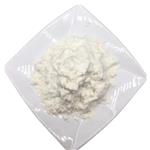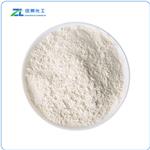- Ethephon
-

- $10.00 / 25kg
-
2025-04-23
- CAS:16672-87-0
- Min. Order: 1kg
- Purity: 99.5%
- Supply Ability: 100
- Ethephon
-

- $999.00/ ton
-
2025-04-23
- CAS:16672-87-0
- Min. Order: 1ton
- Purity: 99%
- Supply Ability: 5000
- Ethephon
-

- $56.00/ kg
-
2025-04-15
- CAS:16672-87-0
- Min. Order: 1kg
- Purity: 99%
- Supply Ability: 5000kg/week
|
| | Ethephon Basic information |
| | Ethephon Chemical Properties |
| Melting point | 70-72 °C(lit.) | | Boiling point | 265°C(lit.) | | density | 1.2000 | | storage temp. | 2-8°C | | Water Solubility | Completely soluble in water | | solubility | DMF: 30 mg/ml,DMSO: 30 mg/ml,Ethanol: 25 mg/ml,PBS (pH 7.2): 10 mg/ml | | pka | 1.88±0.10(Predicted) | | form | Powder | | color | White to beige | | Sensitive | Hygroscopic | | Merck | 14,3732 | | BRN | 1751208 | | Stability: | Hygroscopic | | InChIKey | UDPGUMQDCGORJQ-UHFFFAOYSA-N | | LogP | -0.220 | | CAS DataBase Reference | 16672-87-0(CAS DataBase Reference) | | NIST Chemistry Reference | Phosphonic acid, (2-chloroethyl)-(16672-87-0) | | EPA Substance Registry System | Ethephon (16672-87-0) |
| | Ethephon Usage And Synthesis |
| Chemical Properties | white to beige powder | | Chemical Properties | Ethephon is a white to tan powder. Commercial
product is a white, waxy solid. Commercial products may be
available as aqueous solutions or soluble concentrates. | | Uses | Accelerates the preharvest ripening of fruits and vegetables. | | Uses | 2-Chloroethyl)phosphonic acid (Ethephon) is the most widely used plant growth regulator. Ethephon is often used on wheat, coffee, tobacco, cotton, and rice in order to help the plant's fruit reach mat
urity more quickly. The toxicity of Ethephon is actually very low, and any Ethephon used on the plant is converted very quickly to ethylene. | | Definition | ChEBI: A phosphonic acid compound having a 2-chloroethyl substituent attached to the P-atom. | | Agricultural Uses | Plant growth regulator: Ethephon is a plant growth regulator used to promote
fruit ripening, abscission, flower induction, and other responses.
It is registered for use on a number of food, feed
and nonfood crops (rubber plants, flax), greenhouse nursery
stock, and outdoor residential ornamental plants, but is used
primarily on cotton. Ethephon is applied to plant foliage by
either ground or aerial equipment. It also may be applied
by hand sprayer to certain home garden vegetables and ornamentals.
Use practice limitations include prohibitions
against applying ethephon through any type of irrigation system;
feeding or grazing livestock in treated areas; and treating
within 2 to 60 days of harvest, depending on the crop. | | Trade name | AMCHEM® 68-250; ARVEST®; BASE®
250; BOLL’D®; BROMEFLOR®; BROMOFLOR®;
CAMPOSAN®; CEPHA®; CEPHA® 10LS; CERONE®;
CHIPCO® FLOREL PRO; ETHEPON®; ETHEL®;
ETHEVERSE®; ETHREL®; FINISH®; FLORDIMEX®;
FLOREL®; G-996®; KAMPOSAN®; PREP®; ROLLFRUCT®;
TERPAL® (with mepiquat chloride);
T-EXTRA®; TOMATHREL® | | Safety Profile | Moderately toxic by
ingestion. Mddly toxic by skin contact. A
plant growth regulator. Caution: Spray
formulations are quite acidic, about pH 1 .O.
May be irritating to exposed skin and eyes,
or if inhaled. When heated to
decomposition it emits toxic fumes of Cl
and POx. | | Potential Exposure | Ethephon is an organophosphonate
plant growth regulator used to promote fruit ripening,
abscission, flower induction, and other responses. It is registered for use on a number of food, animal feed and nonfood
crops (rubber plants, flax), greenhouse nursery stock, and
outdoor residential ornamental plants, but is used primarily
on cotton. Ethephon is applied to plant foliage by either
ground or aerial equipment. It also may be applied by hand
sprayer to certain home garden vegetables and ornamentals.
Use practice limitations include prohibitions against applying ethephon through any type of irrigation system; feeding
or grazing livestock in treated areas; and treating within
2 to 60 days of harvest, depending on the crop | | Environmental Fate | Soil. Degrades rapidly in soil to phosphoric acid, ethylene and chloride ions (Hartley
and Kidd, 1987) and naturally occurring substances (Humburg et al., 1989).
Chemical/Physical. In an aqueous solution at pH 3.5, ethepon begins to hydrolyze,
releasing ethylene (Windholz et al., 1983). | | Shipping | UN2928 Toxic solids, corrosive, organic, n.o.s.,
Hazard Class: 6.1; Labels: 6.1-Poisonous materials,
8-Corrosive material, Technical Name Required | | Incompatibilities | Hygroscopic. Aqueous solutions are
highly acidic. May cause corrosion if metals, especially
when moisture is present. Contact with flammable material
may cause fire and explosions. Contact with combustible or
oxidizable materials may form heat-, shock-, and frictionsensitive explosive mixtures. Static electricity may also
cause explosions. Keep away from all acids, especially
dibasic organic acids, ammonium compounds, antimony
sulfide, arsenic trioxide, metal sulfides, powdered metals,
calcium aluminum hydride, cyanides, manganese dioxide,
phosphorus, selenium, sulfur, thiocyanates, and zinc. | | Waste Disposal | Destruction by alkali hydrolysis or incineration. Containers must be disposed of properly
by following package label directions or by contacting your
local or federal environmental control agency, or by contacting your regional EPA office. |
| | Ethephon Preparation Products And Raw materials |
|